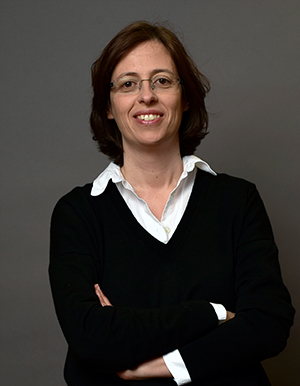Mariana Gomes de Pinho Lab

 |
In the Bacterial Cell Biology laboratory we use the Gram positive pathogen Staphylococcus aureus to study the mechanisms of cell division and of antibiotic resistance to cell wall targeting antibiotics. |
|
Mariana Gomes de Pinho Phone (+351) 214469527 | Extension 1527 |
|
 |
Research Interests
Bacterial cells have revealed a surprising degree of organization. Many essential cellular processes are performed by higher order protein complexes, which are precisely regulated in time and space. We are interested in understanding the organization, as well as the temporal and spatial regulation, of the fundamental processes of cell division, cell wall synthesis and chromosome segregation.
We use Staphylococcus aureus as a model organism. S. aureus is a Gram-positive bacterial pathogen and a major cause of antibiotic resistant infections. Besides its clinical relevance, S. aureus is also a very interesting model to study cell division because it has a different shape and mode of division from the traditional, widely used, model organisms Escherichia coli and Bacillus subtilis. S. aureus cells are spherical and, more interestingly, divide in three consecutive perpendicular planes over three division cycles.
We use the information gained by studying fundamental processes in a bacterial pathogen to better understand antibiotic resistance mechanisms in S. aureus, as well as the mode of action of new antimicrobial compounds. We strongly believe that fundamental research on pathogens biology is essential for the development of innovative strategies against clinically relevant pathogens.
Group Members
-
Patricia Reed, Post Doc
-
Helena Veiga, Post Doc
-
Simon Schaeper, Post doc
-
Nils Meiresonne, Post doc
-
Adrian Izquierdo Martinez, Post doc
-
Sara Costa, PhD student
-
Moritz Sorg, PhD student
-
Andreia Duarte, PhD student
-
António Brito, PhD student
-
Leonor Marques, PhD student
-
Dominik Alwardt, research student
Selected Publications
-
Peptidoglycan synthesis drives an FtsZ-treadmilling-independent step of cytokinesis.
Monteiro JM, Pereira AR, Reichmann NT, Saraiva BM, Fernandes PB, Veiga H, Tavares AC, Santos M, Ferreira MT, Macário V, VanNieuwenhze MS, Filipe SR, Pinho MG.
Nature. 2018; 554:528-532. doi: 10.1038/nature25506. -
SEDS-bPBP pairs direct lateral and septal peptidoglycan synthesis in Staphylococcus aureus.
Reichmann NT, Tavares AC, Saraiva BM, Jousselin A, Reed P, Pereira AR, Monteiro JM, VanNieuwenhze MS, Fernandes F, Pinho MG.
Nature Microbiology. 2019; 4:1368-1377. doi: 10.1038/s41564-019-0437-2. -
Reassessment of the distinctive geometry of Staphylococcus aureus cell division.
Saraiva BM, Sorg M, Pereira A, Ferreira MJ, Caulat LC, Reichmann NT, Pinho MG.
Nat Commun 2020;11:4097. doi: 10.1038/s41467-020-17940-9.
Laboratory's Website
For further information please visit the laboratory's website
Biologia Celular Bacteriana (PT)
No laboratório de Biologia Celular Bacteriana do ITQB NOVA utilizamos a bactéria patogénica Staphylococcus aureus como organismo modelo para estudar o processo de divisão celular, ou seja, o processo pelo qual uma célula bacteriana dá origem a duas células “filhas” idênticas. Estamos principalmente interessados nos processos de segregação dos cromossomas para cada uma das células filhas e de síntese da parede celular que divide a célula mãe ao meio durante a divisão. Pretendemos identificar as maquinarias proteicas responsáveis por estes processos, bem como estudar a sua regulação no espaço e no tempo.
A divisão celular pode ser impedida pela acção de vários antibióticos. Uma vez que Staphylococcus aureus constitui uma das principais causas de infecções hospitalares resistentes a antibióticos, usamos o conhecimento obtido no estudo de processos bacterianos fundamentais para investigar mecanismos de resistência a antibióticos e modos de ação de novos compostos antibacterianos.









